Motorola Droid X2 Review - A Droid X with Tegra 2
by Brian Klug on July 7, 2011 8:31 AM ESTThe X2 also appears to be outfitted with a slightly darker grey shell than the original X. Alongside the X which I borrowed, the X2 looks almost black. It’s hard to say whether that’s just because his X has faded considerably, or whether the X2 has been intentionally made darker so people can tell the two apart. It’s probably a subtle thing similar to the way Apple made logos chrome between the 3G and 3GS to differentiate the two.
The other obvious way to differentiate which one is which is by looking at the back cover. The X2 has its name in red written below the metallic Motorola logo on the battery door. Otherwise even the two battery doors are identical. The trademark thickness bulge where the camera is located also persists on the X2. This is one area that I think could have benefited from some slimming, although it’s physically impossible to reduce the throw (depth) of some camera systems.
Button placement on the X2 is likewise the same as the X. At the top is power, centered and raised slightly. Just offset from it is the headset jack and then a microphone for noise cancellation on calls.
On the right side is the volume rocker which is identical to the one on the X. It’s a solid piece of plastic with a small detent in the center. The buttons are still sufficiently clicky. Of course, at the very bottom of the right side is where the two-step camera button would have been, should Motorola have decided it was worth keeping.
The bottom has a small lip with the same physical, backlit Android buttons. Thankfully these are in the same order as they were on the X, so there’s no relearning if you’re upgrading. Dead center below buttons is the primary microphone for calls, just like before.
The left side of the X2 is still home to microUSB and a microHDMI port. Back when we reviewed the X, I was disappointed with how HDMI was implemented. You could output certain types of media to the TV, but not do full mirroring. Instead, the display turned into a small control panel, and the attached HDMI monitor became the playback canvas. It felt half-baked back then.
This time, you can do full mirroring with overscan control. What’s odd, however, is that rotation isn’t implemented like it was on the Optimus 2X.
Plug an HDMI monitor in, and the whole interface rotates to landscape and stays there. If you have an application which only has portrait support, it will appear rotated 90 degrees on the TV, instead of rotating properly like the LG Optimus 2X does.
The phone’s display is upscaled to 1080p using what looks like nearest neighbor, so things are blocky, but it works.
Proximity sensor and the notification LED are still hidden in the black strips up near the earpiece. Again, it wouldn’t surprise me if all of this was exactly the same as it was on the original X just because of how virtually nothing is physically different on the outside of the X2. I guess that actually sums up what there is to say about the exterior - if you liked the angular and masculine aesthetics of the original X, you’ll like the X2 because it’s essentially the same thing. Similarly, if you disliked the way the X looked, you’ll dislike the X2.


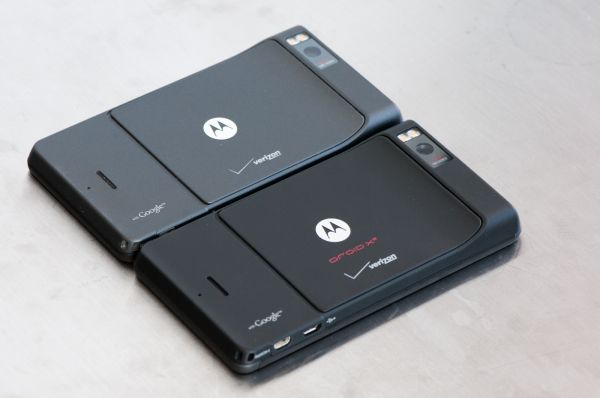
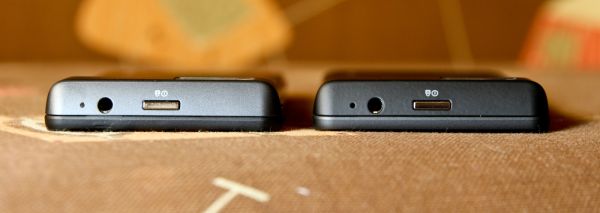
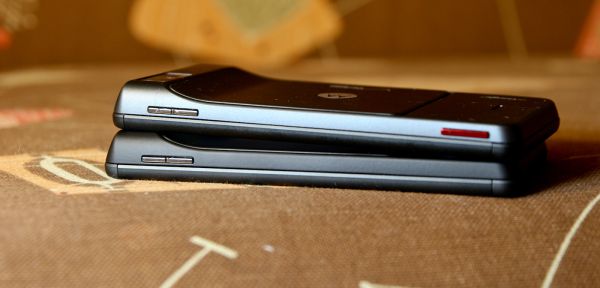
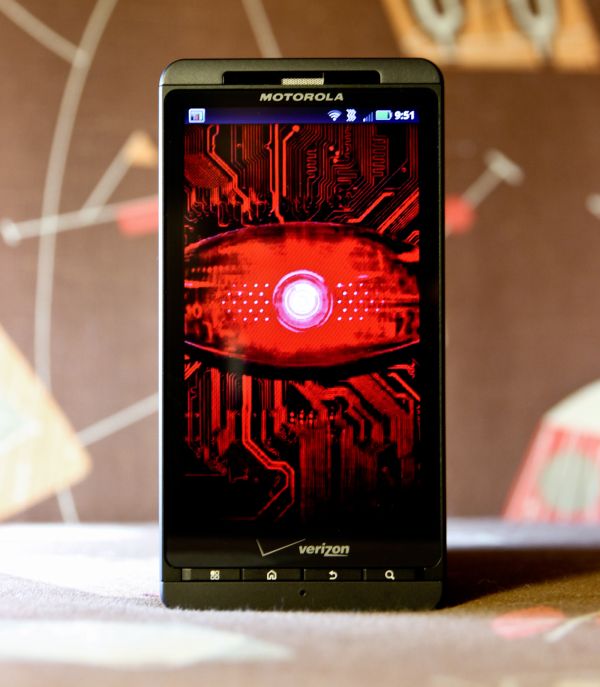
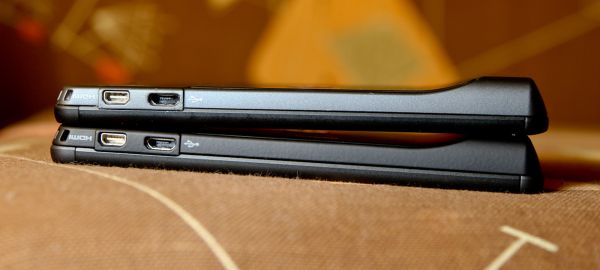
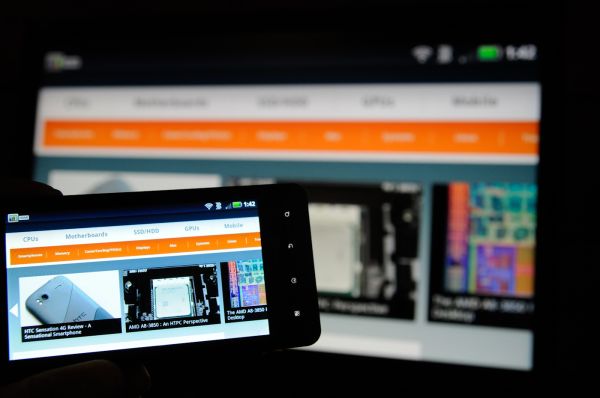
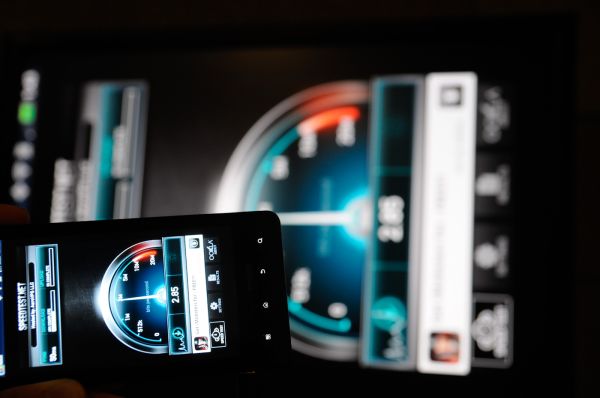
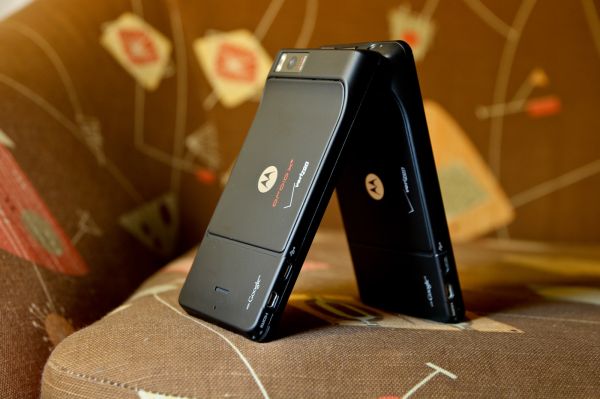














72 Comments
View All Comments
Hrel - Thursday, July 7, 2011 - link
I'd like to see them add an attachable/detachable slide out keyboard. Then they could also add a gamepad for actual hand held gaming. And they'd get to make money selling more accesories. It's a win for everyone! The thing is so thin as it is it can stand to gain some thickness without being an issue AT ALL.snoozemode - Thursday, July 7, 2011 - link
what do you mean, u cant see the grainy pattern in blue color? i see it just as good as in green, download the engadget app and put the icon on the homescreen, tons of black spots in it where the white subpixels have closed. RGBW sucks, period.bjacobson - Thursday, July 7, 2011 - link
all these high powered phones but scrolling up and down with your finger on a webpage is still laggy as hell. ???bplewis24 - Friday, July 8, 2011 - link
They're displaying flash images...what do you expect?JayQ330 - Thursday, September 1, 2011 - link
you have to download a gpu rendering browser, its the reason the iphone & samsung galaxy s2 & even the s are able to scroll & zoom in & out so smooth, when you see checker board effect you know its gpu rendered where as the regular android browsers are constantly resizing & adjusting words & images in realtime. they should take a hint from samsungs browser.NeoteriX - Thursday, July 7, 2011 - link
If I was looking on my HTC Evo 3D, what text would I be searching for in the dmesg output to identify the camera initialization line?Brian Klug - Thursday, July 7, 2011 - link
Things like this:<4>[ 14.364959] __s5k3h1gx_probe
<6>[ 14.365051] s5k3h1gx_vreg_enable camera vreg on
<6>[ 14.365173] sensor_vreg_on camera vreg on
<6>[ 14.365722] sensor_power_enable("gp4", 2850) == 0
<6>[ 14.366180] sensor_power_enable("gp6", 2850) == 0
...
<6>[ 14.463897] s5k3h1gx_probe successed! rc = 0
<6>[ 14.464141] ov8810 s->node 1
<6>[ 14.464324] s5k3h1gx: s5k3h1gx_sensor_probe: switch clk
<6>[ 14.464416] Doing clk switch (s5k3h1gx)
<6>[ 14.484527] [Camera] gpio_request(30, "s5k3h1gx")
Note the part with OV8810 which is an omnivision 8 MP 1/3.2" sensor. Possibly the Sensation uses some parts Samsung, some parts OV.
YoPete525 - Thursday, July 7, 2011 - link
Great review as always, but I still find it ironic how far software optimization has to come on Android in general. I realize the X2 is rendering 26%(?) more pixels, but for every time it appears to process actions more quickly than the X, there is an example of it falling behind, like when pulling up the menu with the hardware button, and loading Basemark from the app drawer. Also, if you were to load up one of the more scrolling-conscientious launchers from the market, like LauncherPro or Go Launcher, the homescreens would scroll essentially at the device's refresh rate without stutter. Same story with Opera Mobile vs. the stock browser.NeoteriX - Thursday, July 7, 2011 - link
As I thought when I first looked at the dsmeg output; looks like it's no dice -- where the sensor ID should be is only "sp3d":<6>[73834.064016] [CAM]sp3d_vreg_enable camera vreg on
<6>[73834.064139] [Camera]Shooter_sp3d_vreg_on
...
<6>[73837.130660] [CAM]sp3d_spi_open_init: 1697
<6>[73837.130691] [CAM]sp3d_vreg_enable camera vreg on
<6>[73837.130691] [Camera]Shooter_sp3d_vreg_on
<6>[73837.132155] [CAM]sp3d: sp3d_sensor_probe: switch clk
<6>[73837.163436] [CAM]sp3d_sensor_setting type:0 config:0
Thoughts?
BTW, for what it's worth, the HTC Evo 4G uses the OV8810 omnivision for its camera:
<6>[690609.827789] [CAM]ov8810_resume
wpwoodjr - Thursday, July 7, 2011 - link
The effective available RAM memory on the DX2 is about 70-80mb less than the DX, you can see this by looking at Settings...Applications...Running Services and adding up the used and free memory. I was all set to buy a DX2 until I saw this. Even in the store I could easily make the Moto launcher close and be forced to redraw with only a few programs open. My DX already runs out of memory, I didn't want more problems. Perhaps this memory is taken up by the graphics card?It would be great if you added some multi-tasking tests to your reviews that would stress memory.